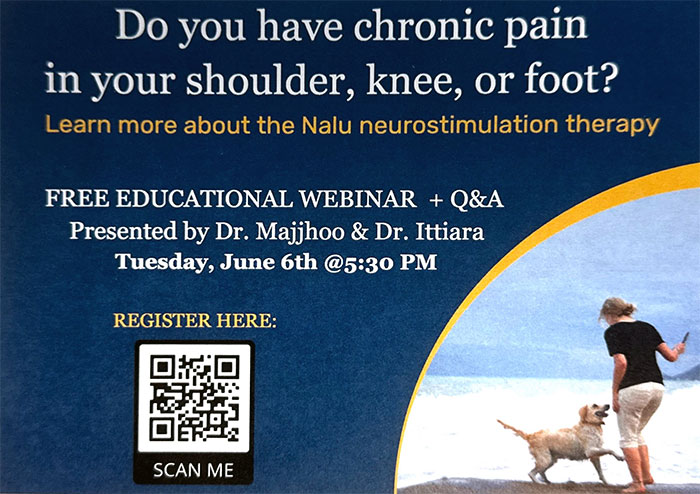FAQs of Neck Pain

What is neck pain?
Neck pain is a common complaint and one of the most frequently reported problems associated with the musculoskeletal system. Among the general population, nearly 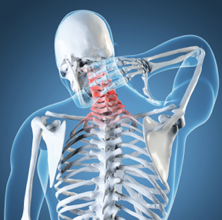 30-50% of adults have neck pain at least one time throughout the year and that number continues to be on the rise (Hogg-Johnson S, et al, Spine, 2008). With so many reported cases, doctors are challenged with finding appropriate treatment.
30-50% of adults have neck pain at least one time throughout the year and that number continues to be on the rise (Hogg-Johnson S, et al, Spine, 2008). With so many reported cases, doctors are challenged with finding appropriate treatment.
Neck pain, by definition, is pain that arises in the neck due to pulled or strained muscles or an abnormality in the joints or disc of the neck. The neck muscles may be strained due to a wide variety of factors, including poor posture, over-use, increased activity, or wear-and-tear on the muscles. Of the number of neck pain complaints reported, arthritis due to wear-and-tear on the muscles of the neck has become a more common complaint than other causes.
Neck pain may occur as a symptom of a more serious problem in the body. Traumatic injury may lead to severe neck pain, accompanied with numbness or tingling in the hands or arms. Loss of strength or shooting pain radiating into the arms may reveal symptoms that are emergent and need to be examined by a medical professional, right away.
What are the main causes of neck pain?
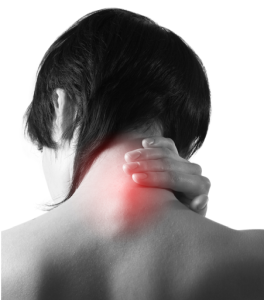 Neck pain may occur due to a number of reasons, but the most common include:
Neck pain may occur due to a number of reasons, but the most common include:
- Muscle strain
A muscle strain is when there is overuse of the muscles in the neck that results in pain. A trigger for neck pain that is caused by muscle strain may be poor posture when sitting for prolonged periods of time. Minor activities such as reading in bed or gritting the teeth at night may contribute to neck strain.
- Fracture of the neck – Injuries
Traumatic injuries may result in a neck fracture. Pain caused by a neck fracture is more severe than whiplash pain, where the muscles are strained from jerking the head back and forth abruptly. A fracture may occur in one of the cervical disc or vertebrae along the spine, causing significant and sometimes chronic pain.
An odontoid fracture may occur due to a fall. If neck pain exists after an injury, x-rays should be obtained and possibly a CT Scan.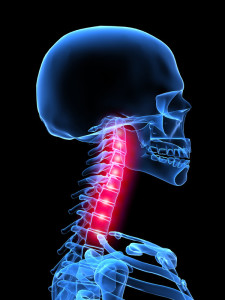
- Diseases
Diseases, such as degenerative and rheumatoid arthritis may cause neck pain. Other, less common diseases that lead to muscle pain and deep neck discomfort includes certain forms of cancer, .
- Compression of the nerves
Similar to a fracture in the neck, nerve compression results from a herniated disk somewhere along the vertebrae of the neck or cervical spine. The herniated disk may take up too much space along the spine causing the disk to press against the nerves that lead out to the spinal cord. Severe pain and discomfort may be caused by nerve compression in the spine. This may also result from spinal stenosis, a condition that results from arthritis where overgrowth of bone and soft tissue pinches on nerves.
- Worn out joints
Similar to all of the joints in the human body, the neck undergoes wear and tear on the muscles, cartilage and bone as a person ages. The wear-and-tear may cause 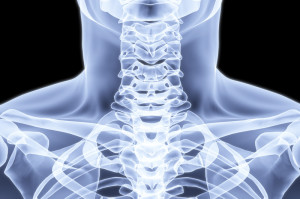 inflammation, which leads to osteoarthritis in the neck. This condition can be painful and require treatment in order to curb the pain and symptomatic problems.
inflammation, which leads to osteoarthritis in the neck. This condition can be painful and require treatment in order to curb the pain and symptomatic problems.
How is the cause of neck pain diagnosed?
Your NIPM pain management doctor will conduct a thorough physical examination in order to make a diagnosis of the cause for neck pain. The doctor will assess the neck and cervical spine for areas of tenderness and pain. Numbness, tingling sensations and muscle weakness will also be assessed in the extremities. The patient will be asked to perform a number of movements, such as moving the head from side to side and back and forth, so that the doctor can gain a clear picture of any limited range of motion or painful movements.
Imaging exams
In some cases, a better picture is needed to assess neck pain. Imaging exams may include: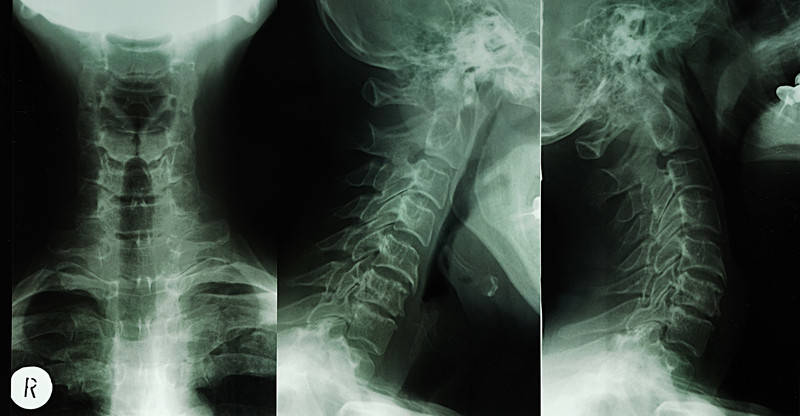
- CT scan
- MRI
- X-rays
Nerve tests
If the doctor suspects a pinched nerve that may be contributing the neck pain, nerve testing may be ordered. Electromyography (EMG) is a test that involves the insertion of a fine needle into the muscle to assess which nerves are functioning the right way.
Laboratory tests
- Blood tests – Blood tests often reveal inflammatory or infectious diseases that may be contributing to the pain in the neck.
- Lumbar puncture – Also known as a spinal tap, where a needle is inserted into the spine to collect spinal fluid for further testing. This test is ordered if meningitis is suspected.
What are the methods used to treat neck pain?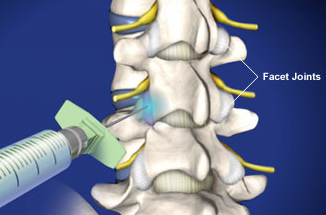
When symptoms do not respond to home care and if the neck pain continues to interrupt daily life, further treatment is required. The most common forms of neck pain treatment include:
- Medication
When over-the-counter anti-inflammatory medication does not work, your doctor may prescribe muscle relaxants and other drugs to eliminate the pain.
- Physical Therapy
Therapy for the neck may include at-home care, physical therapy, or a combination of both. Exercises and stretching, traction and even immobilizing the neck for a short period of time may be required to provide relief from neck pain.
- Chiropractic Treatment
Treatment with a chiropractor may provide excellent neck pain relief. There are additional treatments a chiropractor may provide on top of adjustments such as physical rehabilitation, electrical stimulation, and ultrasound.
- Acupuncture
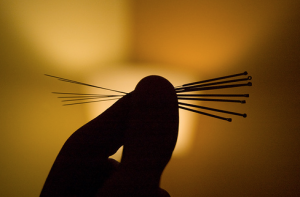
Arthritis, spinal stenosis and herniated discs of the cervical spine with radiculopathy often respond well to acupuncture. It is a low risk treatment performed as an outpatient.
- Spinal Decompression Therapy
As with low back pain, spinal decompression therapy offers excellent relief for most types of neck pain coming from arthritis, spinal stenosis and more.
- Interventional Pain Treatment


